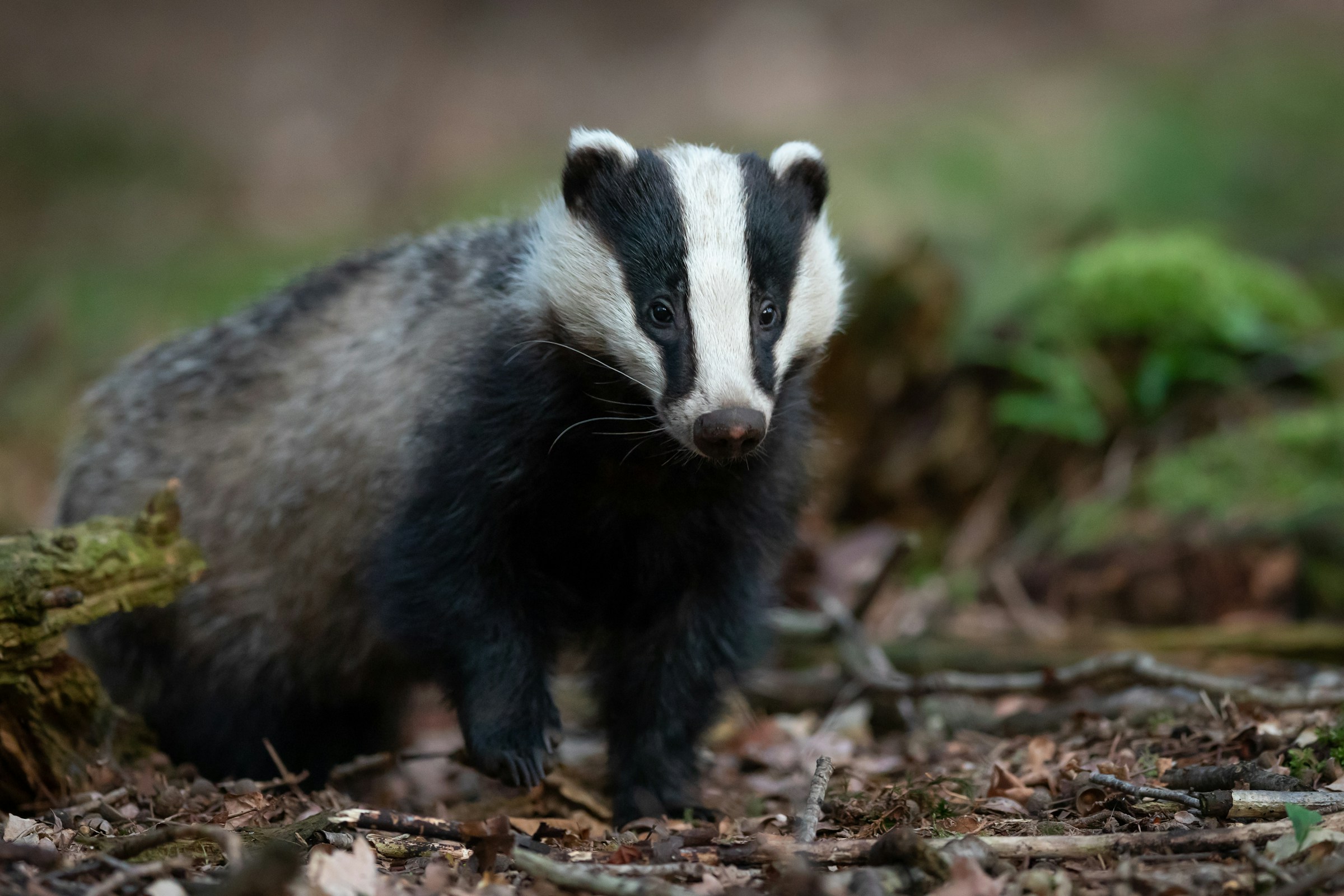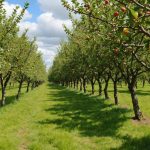Farmers in the UK face the challenge of protecting livestock from badgers while respecting wildlife conservation efforts. Innovative technology offers practical solutions. From effective fencing systems to motion-sensor monitoring and deterrent methods, farmers can safeguard their animals without resorting to drastic measures. These strategies not only enhance livestock protection but also promote harmony between agriculture and wildlife. Explore how these tech-driven approaches empower farmers to coexist with nature while ensuring productivity and sustainability.
Overview of the Badger-Farmer Conflict
The badger conflict in the UK presents a significant challenge for farmers and conservationists alike. Badgers play a crucial ecological role, contributing to soil health and pest control. However, their presence can lead to agricultural challenges, particularly concerning livestock protection.
Avez-vous vu cela : Welcoming a New Kitten: Expert Tips for Introducing Your Corgi with Strong Herding Instincts
Badgers are often implicated in the spread of bovine tuberculosis (bTB) among cattle, a disease that poses a severe threat to livestock health. This has led to tensions between farmers, who are concerned about the impact on their herds, and conservationists, who aim to protect badger populations. The conflict is further complicated by differing opinions on how to manage badger populations effectively.
Current statistics indicate a rise in badger-related incidents affecting UK agriculture. Reports show that badgers are responsible for a notable percentage of bTB cases, leading to significant economic losses for farmers. This has prompted debates on whether culling or vaccination is the most effective strategy for resolving the badger conflict.
Dans le meme genre : Spotting and Reporting Illegal Wildlife Trade in the UK: A Comprehensive Guide
Efforts to balance the ecological benefits of badgers with the need for livestock protection continue to evolve. Understanding the intricate dynamics of this conflict is essential for developing sustainable solutions that address both agricultural challenges and wildlife conservation.
Innovative Technology Solutions for Livestock Protection
In the quest for effective livestock protection, innovative tech solutions are transforming agricultural practices. These technologies offer promising avenues to mitigate the challenges posed by badgers.
Emerging technologies in agriculture include automated monitoring systems that provide real-time alerts. These systems enable farmers to respond swiftly to potential threats, thus enhancing livestock safety. By employing motion sensors and cameras, farmers can monitor their fields without constant physical presence.
Moreover, data analytics play a pivotal role in predicting badger movements. By analysing patterns and behaviours, farmers can anticipate and prepare for badger activity. This predictive capability not only aids in protecting livestock but also reduces unnecessary interventions, fostering a harmonious coexistence.
Farm innovation is further bolstered by the integration of GPS tracking and drone surveillance. These tools provide comprehensive coverage of large farming areas, ensuring that no corner is left unmonitored. The combination of these technologies not only safeguards livestock but also optimises farm operations, leading to increased efficiency and productivity.
Overall, these advanced tech solutions present a balanced approach to addressing the badger conflict, offering practical benefits while promoting sustainable farming practices.
Fencing Solutions for Coexistence
In addressing the badger conflict, fencing technology emerges as a practical solution for protecting livestock while allowing badgers to thrive in their natural habitats. Various types of livestock fencing are designed to deter badgers effectively, each with unique features and benefits.
Electric fencing is a popular choice, providing a shock that discourages badgers from entering restricted areas. Its effectiveness relies heavily on proper installation and regular maintenance. Ensuring the fence remains charged and free of vegetation is crucial for optimal performance.
Another option is mesh fencing, which can be buried underground to prevent badgers from digging underneath. This type of fencing requires careful installation to ensure it is deep enough to thwart determined diggers.
Best practices for fencing include regular inspections and repairs to address any damage promptly. It’s essential to adapt fencing strategies based on the landscape and specific badger behaviours observed in the area.
Successful case studies demonstrate that combining different badger deterrents with fencing can significantly reduce incidents. For instance, integrating visual deterrents like reflective tapes with electric fencing has shown promising results in several UK farms, fostering a peaceful coexistence between agriculture and wildlife.
Wildlife Monitoring Systems
In the realm of wildlife monitoring, camera traps have emerged as indispensable tools. These devices, strategically placed in key locations, capture images and videos of badger activity without human interference. This non-intrusive method allows for the continuous observation of wildlife, providing valuable insights into their behaviours and movements.
The data collected from these monitoring systems is crucial for informed decision-making. By analysing the footage, farmers and conservationists can gain a deeper understanding of badger patterns, enabling them to implement more effective strategies for livestock protection. This analytical approach not only aids in mitigating conflicts but also promotes a harmonious coexistence between agriculture and wildlife.
Several UK farms have successfully implemented wildlife monitoring projects. For instance, one project utilised camera traps to track badger movements, leading to the development of targeted deterrents that significantly reduced livestock disturbances. Such examples highlight the practical benefits of integrating monitoring technology into farming practices.
Monitoring systems offer a proactive solution to the badger conflict, allowing for real-time adjustments and fostering a sustainable balance between farming needs and wildlife conservation. With continuous advancements in technology, the potential for these systems to enhance wildlife management continues to grow.
Data Analysis and Predictive Tools
In the realm of modern agricultural technology, the use of data analysis and predictive modeling is revolutionising how farmers make decisions. By leveraging these tools, farmers can gain insights into wildlife patterns, particularly in managing badger activity, which is crucial for effective livestock protection.
Predictive modeling tools play a pivotal role in wildlife management. These tools utilise historical data to forecast potential badger movements and interactions with livestock. By understanding these patterns, farmers can implement proactive measures to mitigate risks, such as adjusting fencing strategies or deploying deterrents.
Case studies have demonstrated the effectiveness of data-driven strategies. For instance, farms that have integrated predictive tools reported a significant reduction in badger-related incidents. One notable example involved the use of data analytics to identify peak badger activity times, allowing farmers to enhance protective measures during these periods.
The integration of data analysis and predictive modeling in agriculture not only aids in resolving the badger conflict but also promotes sustainable farming practices. By making informed decisions based on robust data, farmers can balance the needs of livestock protection with wildlife conservation, fostering a harmonious coexistence.
Community Engagement and Education
In tackling the badger conflict, community engagement plays a pivotal role in fostering understanding and cooperation. Involving local communities in wildlife management ensures that diverse perspectives are considered, leading to more comprehensive solutions. By participating in discussions and decision-making processes, community members can contribute valuable insights and support sustainable practices.
Farmer education is essential for promoting coexistence strategies. Educational programs designed for farmers focus on sharing knowledge about effective ways to manage badger interactions while protecting livestock. These programs often include workshops, field demonstrations, and access to resources that help farmers implement innovative solutions. By equipping farmers with the necessary tools and information, these initiatives encourage proactive approaches to wildlife management.
Collaboration between farmers and conservationists is crucial for harmonising agricultural and ecological interests. Joint efforts can lead to the development of strategies that balance livestock protection with badger conservation. Collaborative projects often involve sharing data, experiences, and resources to create mutually beneficial outcomes. By working together, stakeholders can build trust and develop long-term solutions that address both agricultural challenges and wildlife conservation needs.
Sustainability and Animal Welfare Considerations
In the context of sustainable farming, balancing technological solutions with animal welfare is crucial. Farmers are increasingly adopting tools that not only protect livestock but also ensure ethical practices. For instance, using predictive modeling to anticipate badger movements allows for timely interventions without causing harm, aligning with animal welfare standards.
Sustainable practices in livestock farming go beyond technology. They involve holistic approaches that consider the well-being of all animals involved. This includes maintaining natural habitats for wildlife like badgers, thereby supporting biodiversity. Implementing rotational grazing and organic farming methods can further enhance sustainability, reducing the environmental footprint of farming activities.
Public perception plays a significant role in the adoption of new technologies. As consumers become more aware of ethical practices, there is a growing demand for transparency and accountability in farming operations. Farmers who prioritise animal welfare and sustainability often gain a competitive edge, appealing to environmentally conscious consumers.
By integrating ethical practices into farming, the agricultural sector can address the badger conflict while promoting a more sustainable future. Emphasising animal welfare ensures that technological advancements are used responsibly, fostering a harmonious relationship between agriculture and wildlife.
Government Policies and Support
In the UK, government policies play a crucial role in addressing the badger conflict, balancing wildlife management with agricultural needs. These policies are designed to support farmers while conserving badger populations, ensuring a sustainable coexistence.
The government provides various agricultural support mechanisms, including grants for innovative farming solutions. These grants encourage farmers to adopt technologies that protect livestock without harming badgers. By investing in such solutions, farmers can enhance their operational efficiency and contribute to wildlife conservation efforts.
Wildlife management policies are pivotal in promoting coexistence strategies. The government collaborates with conservationists and farmers to develop guidelines that minimise conflicts. These policies often include measures like controlled culling, vaccination programs, and habitat management, aimed at reducing the spread of diseases like bovine tuberculosis.
Furthermore, the government facilitates educational initiatives to raise awareness about effective coexistence strategies. By providing resources and training, these programs empower farmers to implement sustainable practices. Through comprehensive government policies and support, the UK aims to foster a harmonious relationship between agriculture and wildlife, addressing both economic and ecological concerns.
Future Trends in Agricultural Technology
As agricultural technology trends continue to evolve, UK farmers are poised to benefit from future farming solutions that promise to revolutionise their practices. Emerging technologies on the horizon include advanced robotics, artificial intelligence, and enhanced data analytics, all aimed at increasing efficiency and sustainability in farming operations.
Predictions for the evolution of badger management solutions suggest a shift towards more humane and technologically sophisticated methods. Innovations such as automated deterrent systems and AI-driven monitoring tools are expected to play a significant role in mitigating conflicts between farmers and wildlife. These solutions not only protect livestock but also ensure the conservation of badger populations, aligning with ethical and environmental standards.
The potential impact of these technological advancements on farming sustainability is profound. By integrating cutting-edge innovations, farmers can reduce their ecological footprint while maintaining productivity. This includes precision agriculture techniques that optimise resource use and minimise waste, contributing to a more sustainable future. As these agricultural technology trends unfold, they hold the promise of transforming the landscape of UK farming, fostering a harmonious balance between agricultural needs and wildlife conservation.
















